Virtual reality glasses "budget" (so far without a tracker)
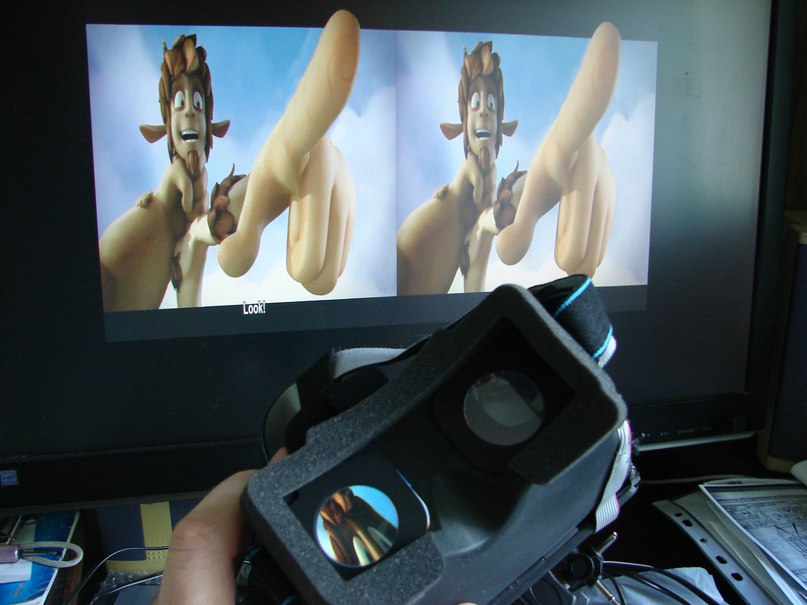
I want to share the experience of assembling and adjusting simple and affordable glasses for viewing 3D content.
At first he made FPV glasses with a Fresnel lens and a 7 ”IPS matrix .
Here are just a tracker based on infrared LEDs and a web-camera turned out to be moody. At least I couldn’t really debug it. The image was displayed by a clone of the main monitor from the video card of a stationary computer via an HDMI cable.
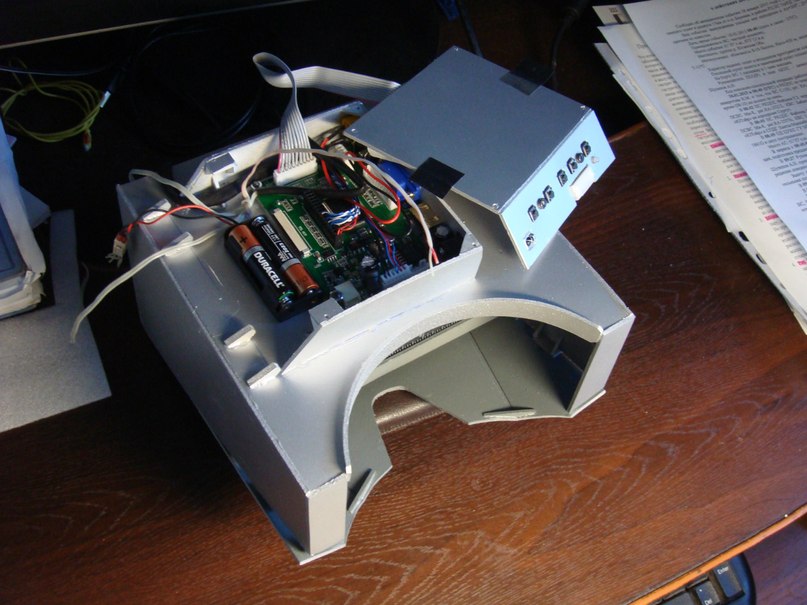
The advantages of this design include:
- fairly wide angle of view;
- focusing to infinity did not cause eye strain;
- very light optics (literally a few grams).
By cons:
- Fresnel lens (focal length - 200 mm) gives an image of not very good quality, especially around the periphery of the screen;
- significant chromatic aberration (color halo around objects on the screen);
- the glasses turned out to be rather bulky due to the large focal length of the lens;
- it is impossible to achieve a stereo effect in them, since the image for both eyes is common.
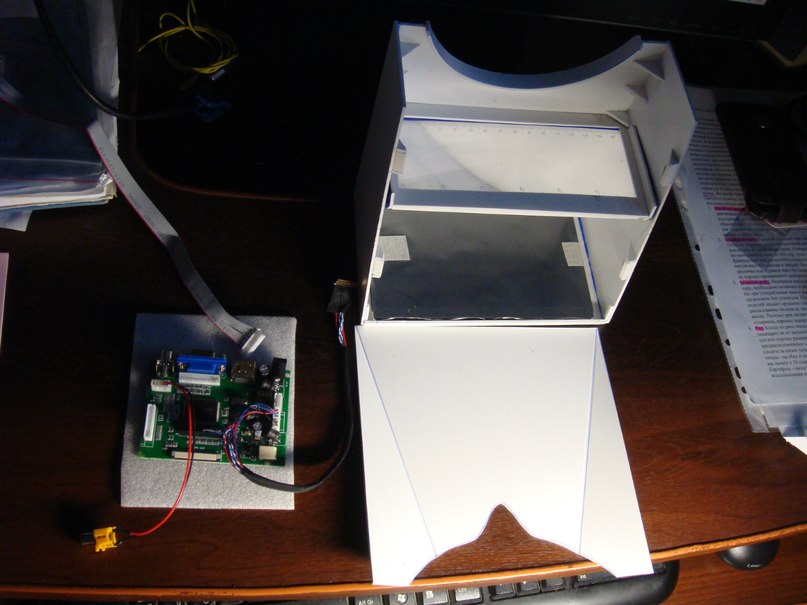
I decided to move on. There was an idea on the basis of the same matrix to make a shorter-focus design with the possibility of 3D-vision. And, if possible, connect a more advanced tracker on solid-state gyroscopes.
He refused Fresnel lenses and chose such 3D glasses as the base .
Their focal length turned out to be approximately 80 mm. The lenses are flat - convex, plastic. There is even an interpupillary distance adjustment.
Assembling and adjusting glasses
First of all, I took them apart and blew them inside and out with black matte paint to avoid unnecessary glare. What’s generally not necessary. Lens and straps left as is.
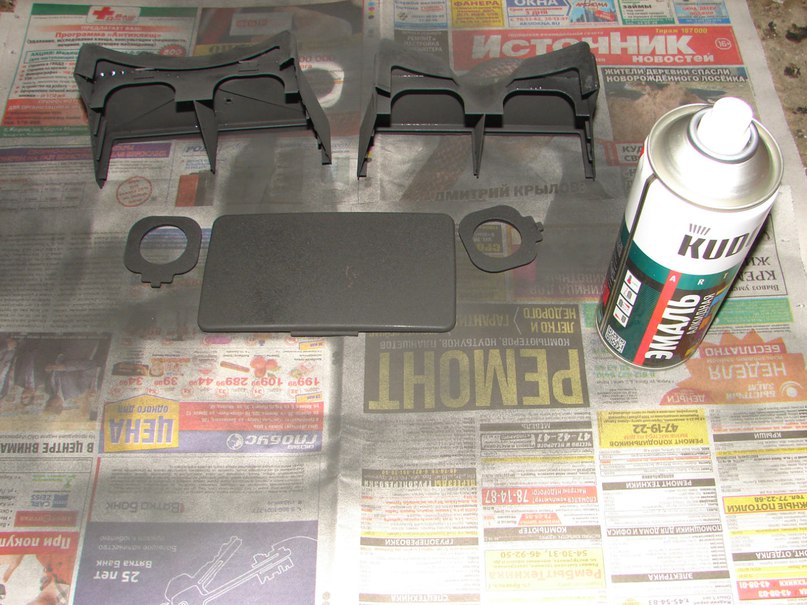
Immediately in front of me was the question: at what distance from the lenses do I place the screen? Determined the focal length"Solar test." He directed the lens to an infinitely distant light source - the Sun. He measured at what distance the light beam gathered into a smallest spot.
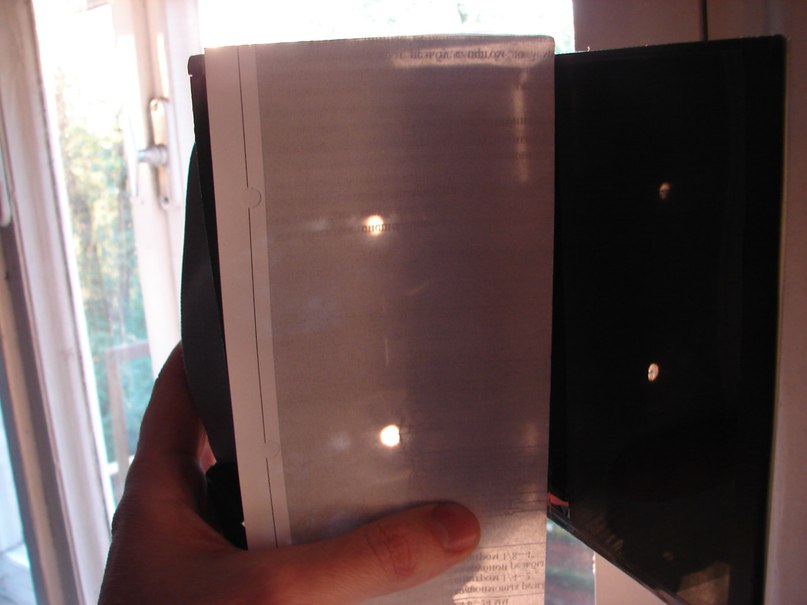
The method is not precision, but quite accurate. Lets you find the focal length of the lens.
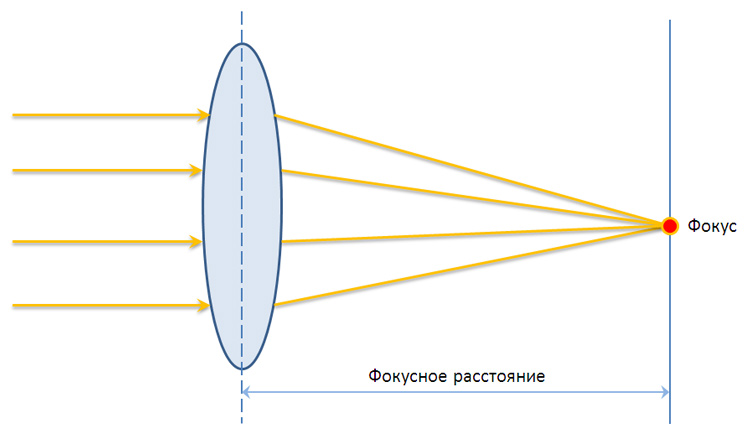
If you place the screen at such a distance, then the diverging light flux from each pixel, passing through the lens, will be parallel. Thus, the image will be as if at infinity, which is necessary for a comfortable perception. This adjustment method is suitable for normal vision and from any distance the picture on the screen is clear.
The original design, I don’t know why, did not meet this criterion. The glasses went through a redo. The screen placed a little further - at a distance of 83 mm.
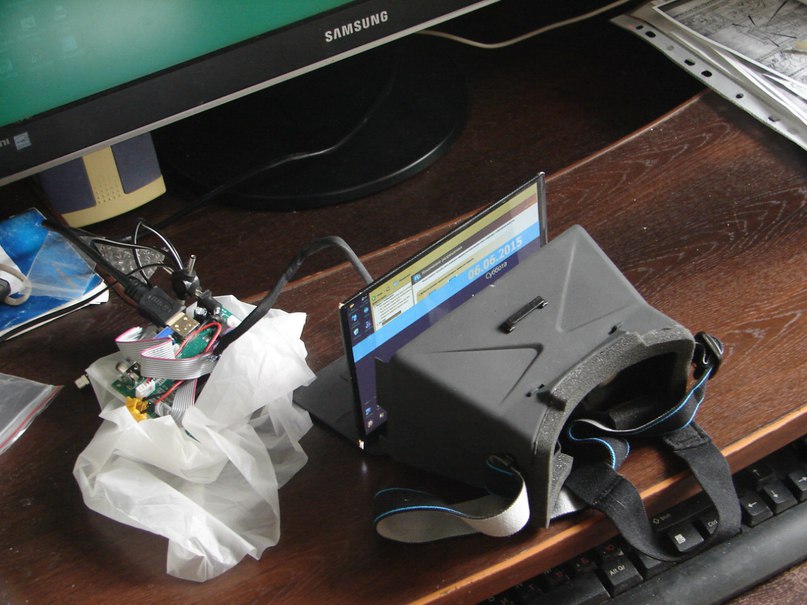
The board sits well on the outside of the eyeglass flap.

Black draped draped edges to avoid side flare and dust.
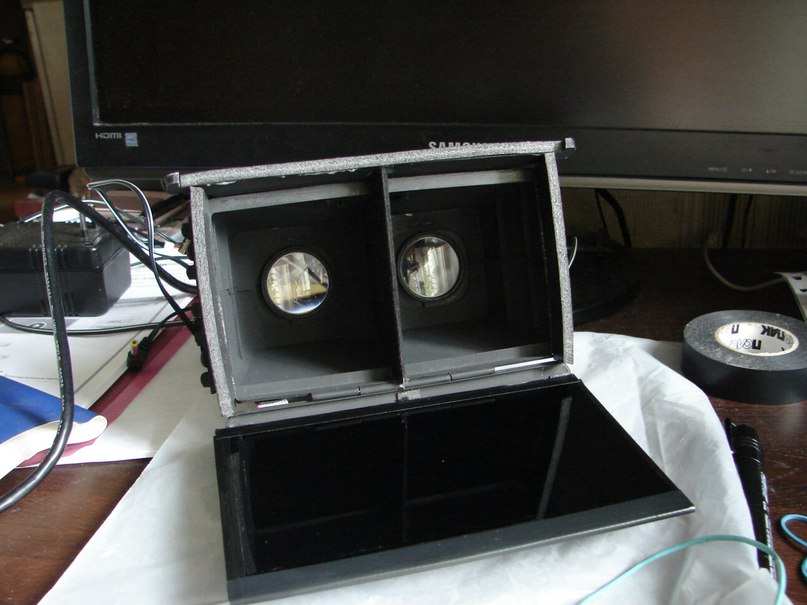
The first viewing of 3D pictures and side by side videos from the network impressed me. It is amazing that such a simple, I would even say a primitive design, can give such an effect!
Some particularly dynamic scenes can literally roll away! Having seen enough of 3D pictures, videos and films, I decided to move on.
The question arose - what about 3D effects in games? In particular, auto, air and other simulators. How can I incorporate this effect into them? There are many solutions , all kinds of glasses are used, specialized monitors ...
Found a suitable iZ3D driver. It is quite old, is no longer supported by the developer, but is compatible with many games! It has several modes. I needed - side by side and without anamorphic compression. In the program config file, this mode is 2. The side by side mode is trial, for 30 days.
The program generates two images with parallax. It is configured, and directly from the game, stereo base and convergence. There are three presets, for each game the driver creates a profile. There are some glitches with shadows, clouds. Where necessary, have to turn them off.
Tested with LockOn 2 and Orbiter 2010 games. These are simulators, aviation and space. So far without a tracker.
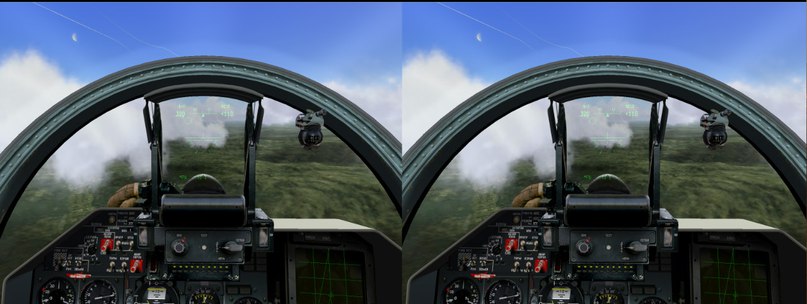

Games, I would say, played with new colors and are perceived in a completely new way. The objects became convex, the volume of the surrounding virtual space is felt. The field of view is large.
My NVidia GTX 275 graphics card easily copes with creating a sterocouple. The board is not particularly powerful by today's standards ... The image of the main monitor duplicated on its glasses, adding brightness.
What happened?
Still can be attributed to the pros:
- wide field of view;
- focusing to infinity does not cause eye strain;
- small, almost invisible, chromatic aberration;
- interpupillary distance is regulated;
- relative compactness of glasses, provides comfort of viewing 3D.
There were also shortcomings which, as you know, are a continuation of advantages.
I will carry to them:
- a grid of pixels and the smallest specks on the screen are visible (a flannel to help);
- the resolution is divided equally, so that each eye gets half the horizontal resolution (2K matrices 6 ”and above can make a difference);
- the absence of external landmarks in dynamic scenes can and does cause, at least for me, palpable vestibular discomfort;
- To improve perception, I had to tape the edges of the matrix with tape. it is wide even for my interpupillary distance (I have 70 mm);
- the human visual analyzer picks up parallax, but the necessary accommodation is not required, focusing to infinity anyway, so you need to get used to such an image.
The matrix of my dreams The
matrix for such an optical system would be desirable:
- more resolution (I have 1280 X 800 pixels);
- smaller diagonal (I have 7 ”, 150 X 94 mm).

The width should be equal to twice the interpupillary distance (for me 140 mm, the height is equal to the interpupillary - 70 mm). Screen resolution is at least twice as good. I have 8 pixels per mm, i.e. need 16 pixels.
Thus, the matrix of my dreams should have the following characteristics: l 6-inch diagonal and a resolution of 2240 X 1120 pixels (140 X 16 (width) and 70 X 16 (height)). And of course a powerful graphics card!
As a result, the
Time spent on the manufacture and adjustment of stereoscopic glasses (just a couple of days) was not wasted. 3D effect is present!
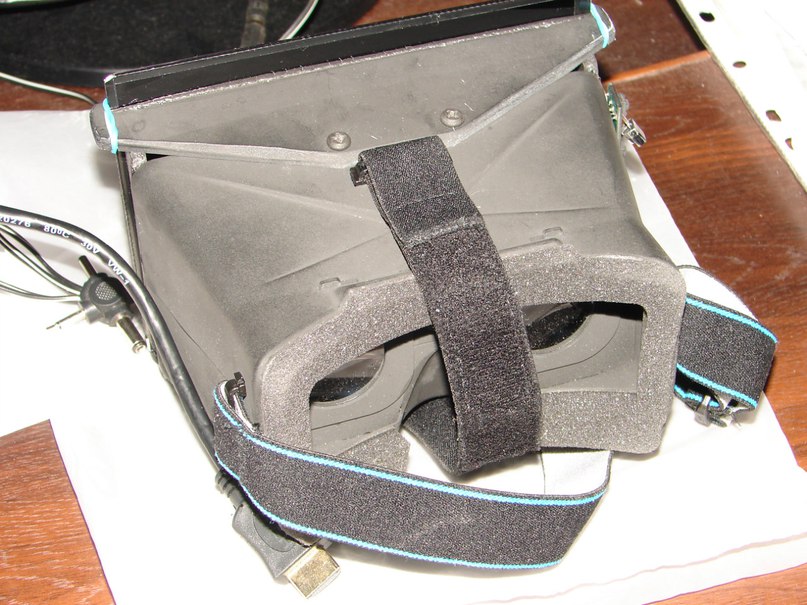
Points are not expensive, they allow you to take a fresh look at old and orderly boring games. It remains only to connect an adequate tracker and already with it immerse yourself in virtual reality already at a new level, not yet known.
Tracker
I want to collect one . And I would have already collected, but the post office adjusted my plans. I am waiting for a package from China with boards and sensors for the tracker.
Finally collected!
